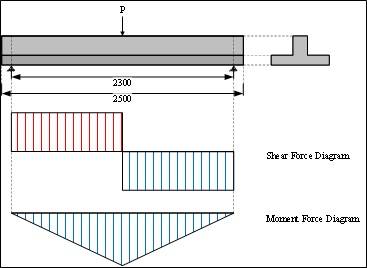The Influence of External CFRP String Reinforcement on The Behavior of Flexural RC Elements
Keywords:
External Strengthening, Carbon Fiber Reinforced Polymer (CFRP), Flexure, load-carrying capacityAbstract
External reinforcement is an excellent method for improving the load carrying capacity and ductility behaviour of reinforced concrete members in flexure. Enhancement becomes a necessity when current standards mandate a higher performance compared to older codes. External reinforcement is an environmentally friendly and sustainable solution, since demolition and re-building could be postponed, and the building can be used while work in conducted on the members. Carbon Fiber Reinforced Polymers (CFRP), having a low weight-to-volume ratio and an excellent resistance to corrosion, can be used as external reinforcement to effectively increase the flexural and shear strength of a member. To evaluate the effectiveness of CFRP strings, two types of reinforced concrete T-beams were tested. The specimens consist of a strengthened member in both shear and flexure using CFRP wraps and CFRP strings, and a conventional reinforced concrete beam. The specimens were subjected to a one-point-loading system to simulate high shear stresses in combination with a maximum bending moment at mid-point. The installation of CFRP strings was conducted using the Near Surface Mounted (NSM) method, while the sheets were Externally Bonded Reinforcement (EBR). The strings and sheets were impregnated and pultruded on side. The test results showed that the strings and wraps substantially increased the ultimate load carrying capacity and ductility of the member. The ultimate load enhancement was found to be 32% from 117kN to 154kN, and the vertical deformation improved 25% from 16 mm to 20 mm. The failure mode was characterized by initial debonding of the strings in the interface between the strings and the epoxy, followed by string-rupture. The two strings ruptured concurrently, due to stress re-distribution within the member.
Downloads
References
Aylie, H., Antonius, Okiyarta, A.W., 2015. Experimental study of steel-fiber reinforced concrete beams with confinement. Procedia Eng. 125, 1030–1035.
Bilotta, A., Ceroni, F., Di Ludovico, M., Nigro, E., Pecce, M., Manfredi, G., 2011. Bond Efficiency of EBR and NSM FRP Systems for Strengthening Concrete Members. J. Compos. Constr. 15, 757–772.
Bouamra, Y., Ait Tahar, K., 2017. Mechanical performance of a confined reinforced concrete beam. Procedia Struct. Integr. 5, 155–162.
Breña, S.F., Bramblett, R.M., Wood, S.L., Kreger, M.E., 2003. Increasing Flexural Capacity of Reinforced Concrete Beams Using Carbon Fiber-Reinforced Polymer Composites. ACI Struct. J. 100, 34–46.
Budipriyanto, A., Han, A.L., Hu, H.T., 2018. Bond-shear Behavior of FRP Rods as a Function of Attachment Configuration. J. Adv. Civ. Environ. Eng. 1, 9–17.
Dias, S.J.E., Barros, J.A.O., Janwaen, W., 2018. Behavior of RC beams flexurally strengthened with NSM CFRP laminates. Compos. Struct. 201, 363–376.
El Gamal, S.E., Al Nuaimi, A., Al-Saidy, A., Al-Shanfari, K., 2019. Flexural behavior of RC beams strengthned with CFRP sheets using different strengthening techniques. J. Eng. Res. 16, 35–43.
Han, A., Gan, B.S., Budipriyanto, A., 2018. Shear-bond behavior of fiber reinforced polymer (FRP) rods and sheets, in: MATEC Web of Conferences. pp. 1–7.
Huang, L., Zhang, C., Yan, L., Kasal, B., 2018. Flexural behavior of U-shape FRP profile-RC composite beams with inner GFRP tube confinement at concrete compression zone. Compos. Struct. 184, 674–687.
Kotynia, R., Baky, H.A., Neale, K.W., Ebead, U.A., 2008. Flexural Strengthening of RC Beams with Externally Bonded CFRP Systems: Test Results and 3D Nonlinear FE Analysis. J. Compos. Constr. 12, 190–201.
Lee, D., Cheng, L., Yan-Gee Hui, J., 2013. Bond Characteristics of Various NSM FRP Reinforcements in Concrete. J. Compos. Constr. 17, 117–129.
Mugahed Amran, Y.H., Alyousef, R., Rashid, R.S.M., Alabduljabbar, H., Hung, C.C., 2018. Properties and applications of FRP in strengthening RC structures: A review. Structures 16, 208–238.
Sapulete, C.A., 2018. Studi Eksperimental Pengaruh Perkuatan Lentur Fiber Reinforced Polymer Rod pada Balok dan Efektivitasnya (thesis). Diponegoro University.
Shin, Y.S., Lee, C., 2003. Flexural Behavior of Reinforced Concrete Beams Strengthened with Carbon Fiber-Reinforced Polymer Laminates at Different Levels of Sustaining Load. ACI Struct. J. 100, 231–239.
Soliman, S.M., El-Salakawy, E., Benmokrane, B., 2011. Bond Performance of Near-Surface-Mounted FRP Bars. J. Compos. Constr. 15, 103–111.
Tudjono, S., Lie, H.A., Gan, B.S., 2018. An integrated system for enhancing flexural members’ capacity via combinations of the fiber reinforced plastic use, retrofitting, and surface treatment techniques. Int. J. Technol. 9, 5–15.
Tudjono, S., Lie, H.A., Hidayat, B.A., 2015. An experimental study to the influence of fiber reinforced polymer (FRP) confinement on beams subjected to bending and shear. Procedia Eng. 125, 1070–1075.

Downloads
Published
Issue
Section
License
Copyright @2019. This is an open-access article distributed under the terms of the Creative Commons Attribution-ShareAlike 4.0 International License which permits unrestricted use, distribution, and reproduction in any medium. Copyrights of all materials published in JGEET are freely available without charge to users or / institution. Users are allowed to read, download, copy, distribute, search, or link to full-text articles in this journal without asking by giving appropriate credit, provide a link to the license, and indicate if changes were made. All of the remix, transform, or build upon the material must distribute the contributions under the same license as the original.






